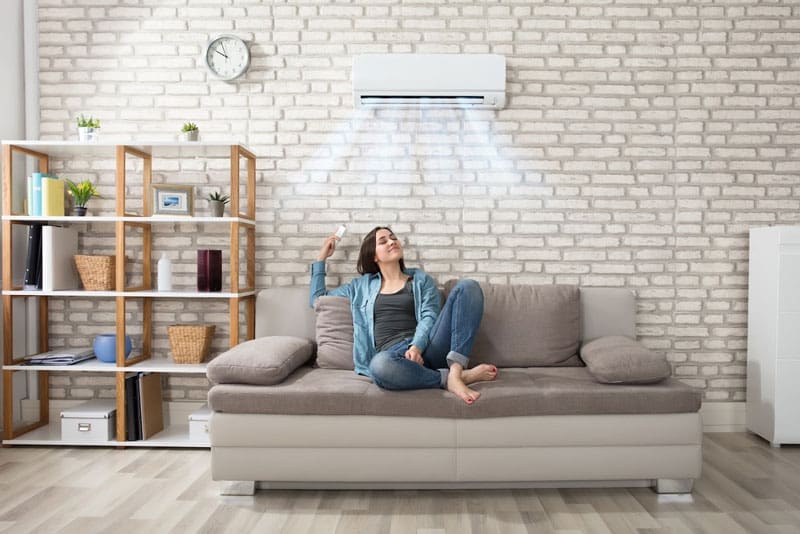Do you want to explore the ductless AC options of mini-split cooling systems? Whether your home isn’t air conditioned or you want to choose a new way to cool the interior area, mini-split systems provide an easy, efficient, and often economical way to keep the summer-time heat at bay.
Before you install a mini-split air conditioner, take a look at what you need to know about sizes, zones, installation, and more.
Is Size Important?
Yes, the size of the mini-split system is important. Even though it might seem like the biggest air conditioner you can buy is your best bet for a cool home, this isn’t always true. To efficiently and effectively cool your home’s interior spaces, you need to properly size the air conditioner. This typically requires the expertise of a trained HVAC professional.
While you can find sizing tutorials online, this isn’t a do-it-yourself job. The wrong size AC system can lead to premature failure, excess wear and tear, poor cooling, or high energy bills. An undersized system may run almost constantly to cool the interior spaces. This requires the use of additional electricity and will increase your utility bills. Not only will you pay more to use a mid-sized (smaller) system, you won’t get the energy-reducing eco-friendliness you might expect from a mini-split air conditioner.
If a system that is too small for your home can cause energy and usage issues, should you select a larger option? Bigger doesn’t equal balance in this situation. A too-large air conditioner might short cycle. This persistent on-off-on-off activity increases energy use and could also lead to higher utility bills or premature system wear out.
How Does Zoned Cooling Work?
Unlike a central air conditioner, mini-split systems don’t use air ducts. This means you don’t have to cool your entire home at one time. Instead, you can choose individual areas or zones to cool. Zoned cooling can cut costs by eliminating unnecessary cooling.
With a mini-split air conditioning system, you won’t need to pay to cool a guest room that you rarely use, the attic, some storage spaces, or other parts of your home.
Before you buy a mini-split system, you will need to decide which areas or zones you want to cool. This will help the HVAC contractor to choose the right size and the correct number of air handlers. Air handlers are the interior units that cool each zone.
According to the U.S. Department of Energy, most mini-split air conditioners use up to four indoor air handlers per one outdoor condenser (the exterior component of this system). This allows you to create four individual zones or cool four separate interior spaces for every one attached condenser.
If your home is larger and you need to cool more than four spaces, talk to the contractor about installing more than one condenser.
Zoned cooling with a mini-split system will make it difficult to control the summer-time temperature in areas without access to an indoor air handler. Even though an open door will allow some air transfer, the effect is minimal. Don’t assume that you could easily cool two nearby rooms with one air handler—especially if household members may accidentally close the door (or doors).
How Should You Install a Mini-Split System?
The simple answer to this question is that you shouldn’t. You won’t only need to hire an HVAC contractor to size your mini-split air conditioner and choose the right number of air handlers or condensers.
You will also need this experienced professional to install the system. Failure to correctly install the outdoor condenser or indoor air handlers could result in a serious safety hazard, reduce cooling capacity, or damage your home.
Along with placing the indoor air handlers, the HVAC technician will also need to install wiring and potentially make electrical system changes. A DIY wiring or electrical job increases shock, fire, and other similar safety risks. Never attempt this type of HVAC service yourself.
Where Should You Place the System?
You’ve worked with a contractor to choose a system and select the number of air handlers for your home. Now you’re ready to take the next step and place the interior and exterior parts of your new mini-split system. Each air handler will go into a separate room.
The placement of the unit depends on the room’s design, your aesthetic preferences, and the airflow. Cool are sinks and hot air rises. This often makes a floor-level air handler a poor choice.
You will also need to place the outdoor condenser. Check your local or municipal code guidelines for outdoor HVAC unit placement before selecting a location. You may need to place the unit a specific number of feet away from your neighbor’s property line. The outdoor unit will need adequate airflow. Avoid areas filled with shrubs or low-hanging trees.
Are you ready to learn more about mini-split air conditioners and zoned cooling? Contact Steele Bros Heating, Inc. for more information.

